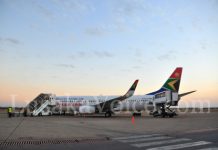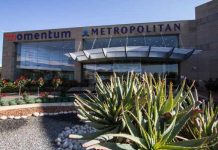Zambeef Products plc has impressed regional agricultural policymakers with a first-hand demonstration of food security in action.
High-level delegates from the Common Market for Eastern and Southern Africa (COMESA)-Comprehensive Africa Agriculture Development Programme (CAADP) took time out from a workshop in Siavonga to visit the company’s Chiawa Farm on the banks of the Lower Zambezi River.
This is according to a press statement released to ZANIS by Zambeef Plc today.
“Zambeef makes a significant contribution to the food security of the nation through its cropping and food processing division,” explained Felix Lupindula, Zambeef’s Head of Corporate and Public Affairs.
“Chiawa Farm is a model of how agriculture can be carried out across the region using efficient irrigation systems, the latest precision farming methods, and a vertically integrated business model to maximise productivity,” he added.
The farm is a green oasis of irrigated land in the otherwise relatively dry Southern Province landscape.
The farm currently has 2,200 hectares under irrigation, growing soybean and lucerne as part of Zambeef’s integrated business model that will see the soybean fed into its crushing plant for production of Zamanita edible oil and Novatek stockfeed. The lucerne is used as high-protein stockfeed.
“I am absolutely amazed at what has been happening here at the farm. It is obviously a large commercial undertaking and a lot of investment has gone in to getting it up and running. This integrated system that Zambeef has in place where one farm is doing the cropping and producing the feed that is going into another farming exercise is absolutely impressive,” said Dr Nalishebo Meebelo, Deputy Co-ordinator of COMESA’s CAADP Unit.
“COMESA is encouraging governments, through the Comprehensive Africa Agriculture Development Programme, to engage the private sector in their agriculture development agenda; but also we encourage our governments to create a conducive environment for the private sector to be able to contribute to the development process. We see Zambeef as being a best practice that other member states and private sector entities could tap in to. There is a lot to learn from this farm and the integration that is happening on the farm,” he added.
The visit was part of a communications and knowledge-sharing workshop organised by COMESA, in collaboration with the UN Food and Agriculture Organisation (FAO) that was officially opened by the Deputy Minister of Agriculture and Livestock, Greyford Monde.
The workshop attracted participants from COMESA and the Economic Community of West African States (ECOWAS) covering 13 countries, namely Swaziland, Eritrea, Ethiopia, Sierra Leone, Ghana, Gambia, Rwanda, Zimbabwe, Zambia, Kenya, Sudan, Malawi and Seychelles.
The Comprehensive Africa Agriculture Development Programme was established in 2002, and is the agricultural programme of the New Partnership for Africa’s Development (NEPAD), which in turn is a programme of the African Union (AU).
The programme focuses on improving food security, nutrition, and increasing incomes in Africa’s largely farming-based economies. It aims to do this by raising agricultural productivity by at least 6 percent per year and increasing public investment in agriculture to 10 percent of national budgets per year.
Chiawa Farm is one of Zambeef’s four estates, the others being Mpongwe Farm, Sinazongwe Farm and Huntley Farm.
The total arable land available for planting in the two cropping seasons in the year to September 30, 2013, was 25,350 hectares – 17,000 hectares in the summer and 8,350 hectares in the winter.
Revenue from cropping accounted for 21 per cent of Zambeef’s group turnover and 28 percent of its gross profit in 2013.

 JOIN DRIVERN TAXI AS PARTNER DRIVER TODAY!
JOIN DRIVERN TAXI AS PARTNER DRIVER TODAY!











